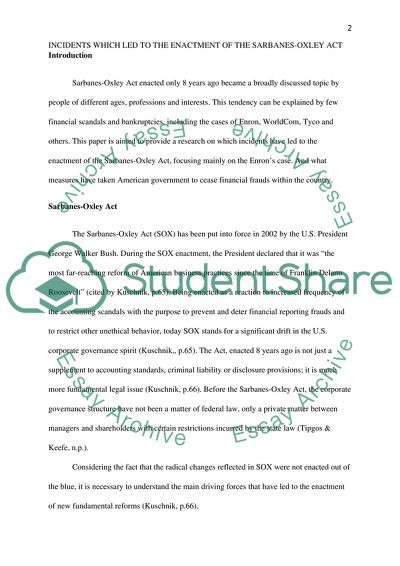Cite this document
(“Incidents Which Led to the Enactment of the Sarbanes-Oxley Act Research Paper”, n.d.)
Retrieved from https://studentshare.org/history/1573880-incidents-which-led-to-the-enactment-of-the-sarbanes-oxley-act
Retrieved from https://studentshare.org/history/1573880-incidents-which-led-to-the-enactment-of-the-sarbanes-oxley-act
(Incidents Which Led to the Enactment of the Sarbanes-Oxley Act Research Paper)
https://studentshare.org/history/1573880-incidents-which-led-to-the-enactment-of-the-sarbanes-oxley-act.
https://studentshare.org/history/1573880-incidents-which-led-to-the-enactment-of-the-sarbanes-oxley-act.
“Incidents Which Led to the Enactment of the Sarbanes-Oxley Act Research Paper”, n.d. https://studentshare.org/history/1573880-incidents-which-led-to-the-enactment-of-the-sarbanes-oxley-act.


